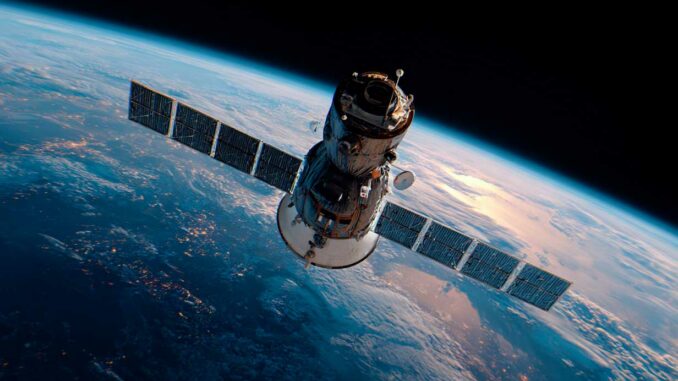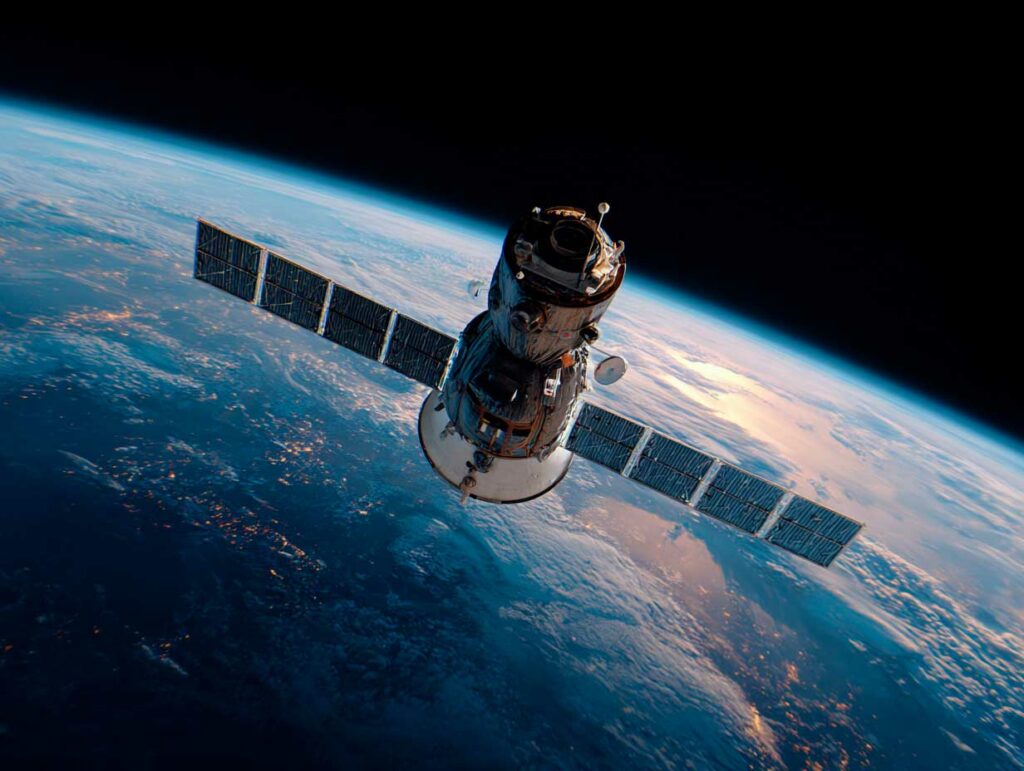
RG-XX redesign: the US Space Force replaces GSSAP with commercial satellites that can be resupplied in orbit to boost Space Domain Awareness in GEO.
Summary
The US Space Force is preparing RG-XX, a program intended to succeed GSSAP with one key requirement: in-orbit refueling. The goal is to extend the mobility of Space Domain Awareness satellites in GEO (≈ 35,786 km), reduce fuel constraints, and maintain RPO capabilities in a more contested environment. The strategy also changes the approach: commercial platforms, an unclassified program potentially open to FMS exports, with several manufacturers competing. The schedule combines operations and demonstrators: launch of GSSAP-7/8 (USSF-87 mission), testing of refueling port (RAFTI), Mission Extension Vehicle-type servicers, Astroscale demonstrations and Orbit Fab depots from 2026, followed by an “Elixir” refueling payload test in 2028. The expected benefits are concrete: more maneuvers for close inspection, better endurance, and emerging orbital logistics. There are many challenges: standardization of interfaces and propellants, cybersecurity of links, and liability in the event of a refueling incident.
The RG-XX program and the transition from GSSAP
The core of RG-XX boils down to a simple operational constraint: maneuvering autonomy must no longer die with the last kilogram of propellant. The six GSSAP satellites launched since 2014 have proven the usefulness of “neighborhood surveillance” in GEO, capable of controlled approaches and RPO to characterize objects of interest. But finite propellant reserves limited useful life and trajectory freedom. Hence the formal requirement for in-orbit refueling for RG-XX. The program is also distinguished by its acquisition method: commercially available platforms, streamlined requirements, unclassified status, and the possibility of FMS sales. This openness aims to capture the speed of execution of agile manufacturers, while promoting competition on subsystems (propulsion, sensors, relative navigation software). The capability component remains clear: maintaining GEO operations with inspection sensors, secure relative navigation, resilient data links, and maneuvering capability supported by the refueling port. In the short term, GSSAP-7/8 must join the working orbit to meet the need until the arrival of the first RG-XXs. In the medium term, the option of a final batch of GSSAPs does not alter the trajectory: to switch to refuelable and modular satellites. The gamble has been taken: it is better to have a space segment that is simpler to purchase but more mobile and supported by emerging orbital logistics than “over-specified” platforms that are quickly immobilized by their empty tanks. This logic leads, de facto, to considering refueling as a service, just like launches.
In-orbit refueling: principles, standards, and risks
In-orbit refueling is based on three components: a fluid interface point (e.g., RAFTI), a docking servicer, and a transfer protocol (pressure/time/temperature) compatible with the customer’s propellant. In GEO, the most common propellant remains hydrazine; some satellites combine electric propulsion (xenon) for fine orbit maintenance. The diversity of propellants poses a direct challenge to “logistical interoperability.” Hence the rise of refueling port standards and adaptation kits. On the operational side, stable RPO contact requires relative navigation sensors (lidar, cameras, RF), guidance algorithms, and connection arms/probes. In terms of safety, the transfer of a hypergolic molecule requires thermal margins and redundant valves. Leak testing using hyperspectral cameras and controlled purging are now standard steps in the sequence. The risks have been identified: contamination, interface shearing, pressure errors, cyber intrusion on the command/control chain. They are managed through joint port-servicer qualification, docking checklists inspired by manned spaceflight, and compartmentalization of control networks. The expected benefits are measurable: considering that a GEO satellite “consumes” a few kilograms of hydrazine per year for station-keeping and maneuvers, a periodic refill of 50–100 kg can extend its use by several years, while allowing for more aggressive RPO campaigns (inclinations, drifts, multiple approaches) that were previously avoided for reasons of economy. Finally, orbital redundancy is changing scale: a fuel depot or repositionable servicing vehicle in GEO reduces the need for an overly large fleet, provided that tighter logistical planning is accepted.

The in-orbit services market and demonstrators 2026–2028
The On-Orbit Servicing segment is becoming industrialized. Northrop Grumman has validated a complete docking/undocking cycle with its Mission Extension Vehicle, extending the life of Intelsat IS-901 by five years. The next step: a Mission Robotic Vehicle capable of installing mission extension pods and, in the future, performing more sophisticated tasks. Astroscale has announced a 300 kg servicer to refuel a DoD satellite above GEO, with two operations planned and post-refueling control by hyperspectral camera. Orbit Fab is pushing its ports and depots to the constellation scale, with a Tetra-5 type demonstrator targeting 2026. On the payload side, Northrop Grumman is set to integrate “Elixir” onto an ESPAStar platform for a propellant transfer test targeted for 2028 at the earliest. Finally, Firefly is preparing Elytra, a maneuverable vehicle designed for Space Domain Awareness and rapid RPOs, with a demonstration launch scheduled before the end of the decade. All of this forms the embryo of an “orbital mobility economy”: standardized ports, depots, servicers, rendezvous software, and dedicated insurance. As demonstrators enter service, the “refuel/replace” trade-off will evolve. Replacing a highly specialized satellite is expensive in terms of integration, insurance, and launch slots; resupply becomes relevant if the refueling cycle is reliable and priced predictably. We can anticipate a mix: more compact RG-XX satellites, reconfigurable by software, refueled regularly, and a few “heavy sensor” units benefiting from less frequent refueling. For the ecosystem, the industrial challenge lies in the transition from “experimental” to “supervised operational”: multi-year contracts, rendezvous SLAs, and clarified responsibilities in the event of an anomaly.
Strategic, industrial, and export (FMS) impacts
On the military front, the introduction of a refueling port in the RG-XX specifications changes the rules of orbital deterrence. A satellite that “doesn’t run out of fuel” increases its freedom of approach, imposes a surveillance cost on its competitors, and maintains normative pressure: those who operate cleanly, record, notify, and can return to the same target several times are playing the long game. In terms of posture, the US Space Force claims to have more responsive Space Domain Awareness, less constrained by residual delta-V. In terms of doctrine, the RPO-Dock-Transfer-Undock chain is becoming a core competency that military staff must preserve: simulators, standardized procedures, relative navigation data shared at the appropriate classification level. Industrially, the opening of RG-XX to commercial platforms and the FMS perspective are shaping an export market for “interoperable” SDA tools, where refueling services are sold as an option. This is a clear-headed choice: pooling technological risk and expanding the industrial base. But it requires safeguards. First, standardization: not multiplying propellants to the point of making logistics untenable. Next, the cybersecurity of RPO chains: docking is a matter of a few millimeters and a few pascal-seconds of pressure; there is little room for error. Finally, responsibility: a failed contact can produce debris in GEO, where repairs are complicated. We cannot build robust orbital logistics without procedural transparency and appropriate insurance regimes. One last point: we must reject idealism. Orbital refueling is not “neutral”; it is dual-natured. We must accept that this capability, while offering operational and economic advantages, also attracts diplomatic controversy. So much the better: standards are set by the test of facts.
War Wings Daily is an independant magazine.